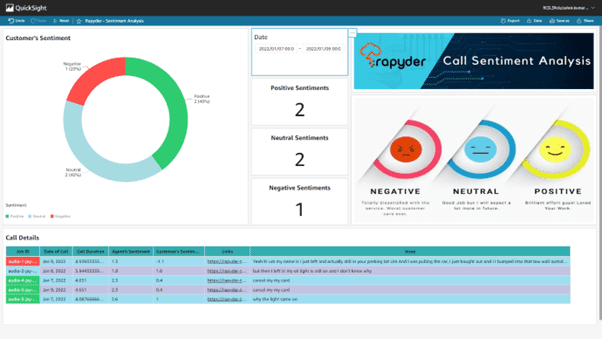Imagine your customer is calling your support center for some issue related to your service or product, and your support agent is not able to solve the customer issue, or the customer is not satisfied with that solution, and then the customer may stop using your service or product.
Customer satisfaction is paramount in the growth of every organization because if one customer stops using your product, the other three recommended customers could stop using your product.
Introducing Amazon Transcribe:
- Amazon Transcribe is an automatic speech recognition service that uses machine learning models to convert audio to text.
- Amazon Transcribe has three main features:
- Amazon Transcription: Transcription can transcribe human speeches via the audio file in text transcription. Transcription can include pre-recorded media, such as movies, music, and podcasts, and real-time media, such as live news broadcasts.
- Amazon Transcribe Call Analysis: Amazon Transcribe Call Analytics gives an insight into customer-agent interactions. Call Analytics provides call summarization, speaker sentiment, call characteristics, and redaction of your text transcript and audio file.
- Amazon Transcribe Medical: Amazon Transcribe Medical enables you to transcribe individual audio content with medical information into text, transcribing a medical conversation between clinicians.
How can Amazon Transcribe Call Analysis help you get a detailed customer call analysis?
- We can use Amazon Transcribe Call Analytics to gain insight from customer & support agent call conversations.
- Call Analytics provides you with rich insights:
- call summarization
- call transcription
- customer & support agent sentiments
- call characteristics (talk time, non-talk time, speaker loudness, interruptions, and talk speed)
- redaction
- Issue detection
- Custom categories of calls by providing your custom rules
- Call Analytics can also help increase staff productivity by eliminating the need for manual note-taking after each call and reducing the amount of time required by supervisors to read transcripts or listen to audio recordings.
Input Requirements:
- Amazon Transcribe Call Analysis takes input as an audio file; supported audio formats are MP3, WAV, MP4, FLAC, and more.
Expected Outcomes:
- Analyzed outputs are given in JSON format. We can transform that JSON file into a beautiful QuickSight Dashboard and generate a detailed analyzed Word file.
- Quick Sight Dashboard Output:

- Word Document Output:
Use cases:
- Monitor issue frequency over time: Use call categorization to identify recurring keywords within your transcripts.
- Gain insight into your customer service experience: Use call characteristics(non-talk time, talk time, interruptions, voice loudness, talk speed) and sentiment analysis to determine if your customers’ issues are being appropriately resolved during their call.
- Ensure regulatory compliance or adherence to company policy: Set keywords and phrases for company-specific greetings or disclaimers to ensure your agents meet regulatory requirements.
- Improve customer data handling: Use transcript and audio redaction to protect customer privacy.
- Improve staff training: Use metrics (sentiment, non-talk time, interruptions, talk speed) to flag transcripts that can be used as examples of positive or negative customer interactions.
- Measure staff efficacy in creating a positive customer experience: Use sentiment analysis to measure if your agents can turn a negative customer sentiment into a positive one as calls progress.
- Improve data organization: Label and sort calls based on custom categories(including keywords and phrases, sentiment, talk time, and interruptions).
- Quickly summarize the essential aspects of a call without needing to review the entire transcript: Use automatic call summarization to get a concise summary of all issues, action items, and outcomes identified in a given call.







